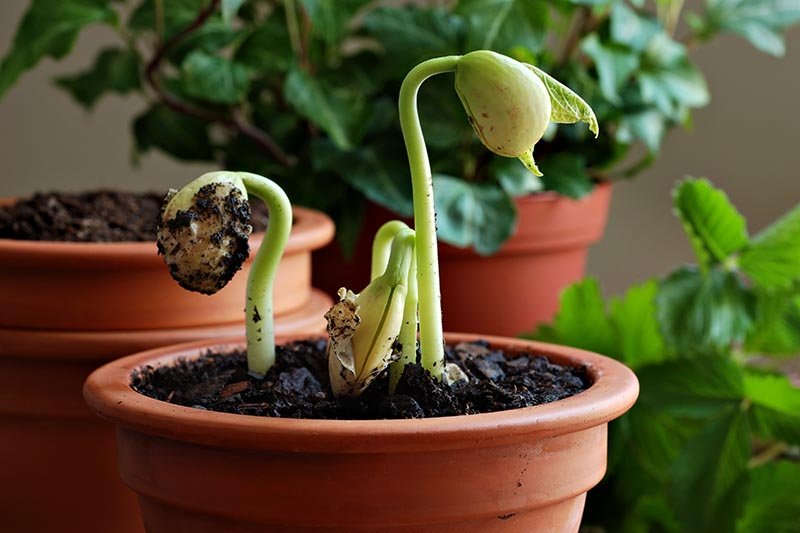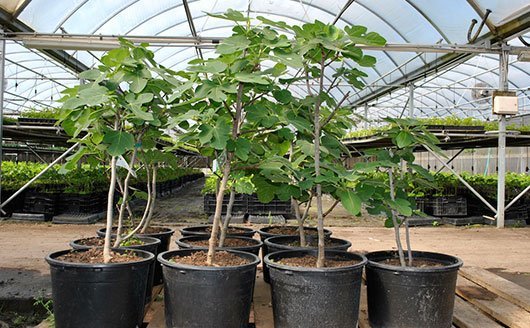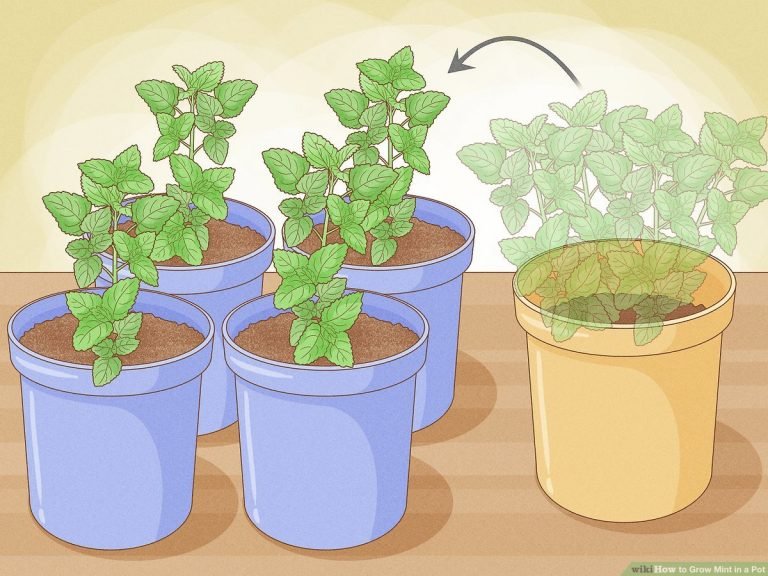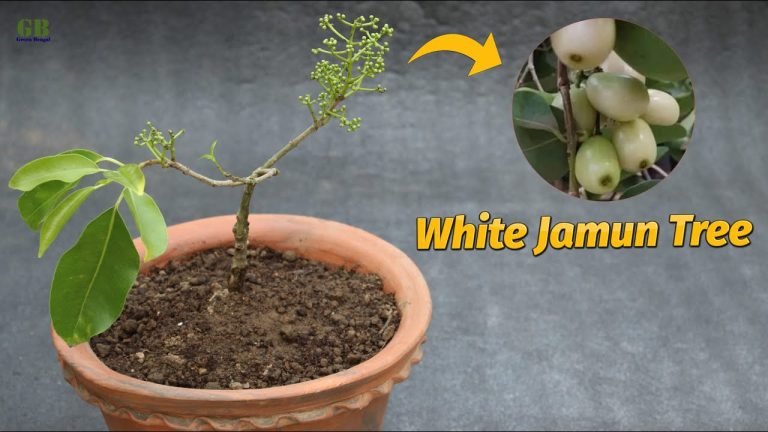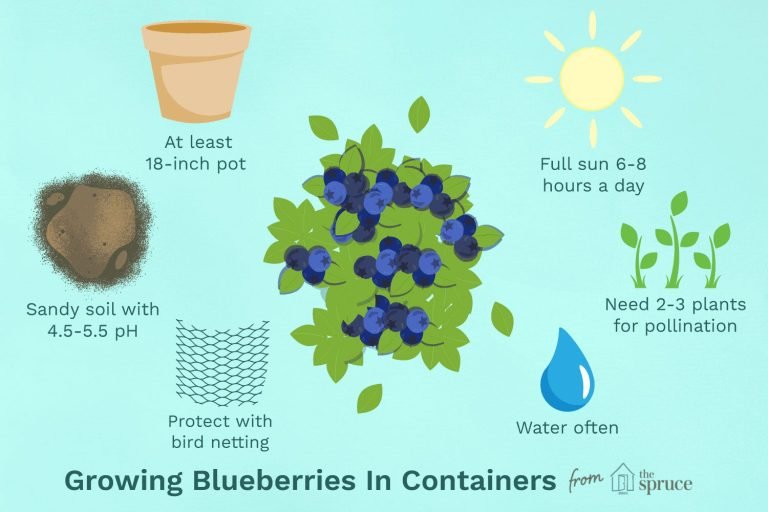how to grow lima beans in a pot – [Beginners Guide]
Hey there! Have you ever considered growing your own vegetables at home? It’s a great way to get fresh, nutritious produce right at your fingertips. Plus, it’s a fun and rewarding hobby that you can enjoy with your family. Today, I want to share with you my personal experience on how to grow lima beans in a pot.
Growing lima beans in a pot is a fantastic idea for several reasons. Firstly, it’s super easy and convenient. You don’t need a big backyard to grow your own lima beans, just a sunny windowsill or a balcony would do the trick. Secondly, it saves you money. Store-bought lima beans can be expensive, but by growing your own, you’ll have a steady supply of fresh beans at a fraction of the cost. Lastly, it’s environmentally friendly. Growing your own food reduces your carbon footprint, and you can control the use of pesticides and other chemicals.
So, are you ready to learn how to grow lima beans in a pot? Let’s get started!
Note: Lima beans are a warm-season crop, so they need to be planted when the temperature is consistently above 60°F (15°C). They also require at least 6 hours of direct sunlight a day, so choose a sunny spot for your pot.
Pot or container selection
For growing lima beans at home, a 12-inch diameter pot with a minimum capacity of 5 gallons is recommended. The pot should have good drainage, as lima beans are sensitive to water-logged soil. A pot with several holes in the bottom will help prevent this issue.
In terms of construction, a lightweight material such as plastic is recommended, as lima beans have shallow roots and need to be moved easily. Avoid using heavy materials like ceramic or concrete, as they will be difficult to move and can retain too much moisture.
For optimal growth, make sure the pot has enough space for the lima beans to spread their roots and grow. A pot with a depth of at least 12 inches is recommended, as lima beans need room for their roots to develop. Additionally, choose a pot with good light exposure for the plant, as lima beans need a lot of sunlight to grow.
In conclusion, a 12-inch diameter pot with a minimum capacity of 5 gallons, made of lightweight material with good drainage, and a depth of at least 12 inches is ideal for growing lima beans at home.
Make suitable soil mix
For growing lima beans at home, a well-draining soil mix is essential for optimal growth. Lima beans prefer a soil pH of 6.0 to 6.5, so it is important to choose a soil mix that is slightly acidic.
A good soil mix for lima beans should contain a combination of compost, peat moss, and sand or perlite. This mixture will provide the necessary nutrients for the plants and improve the soil’s drainage capabilities.
It is important to make sure the soil is moist but not water-logged, as lima beans are sensitive to over-watered soil. To prevent this, mix in some sand or perlite to the soil to improve its drainage capabilities.
In conclusion, a well-draining soil mix containing compost, peat moss, and sand or perlite with a slightly acidic pH of 6.0 to 6.5 is essential for optimal growth of lima beans at home.
How to plant the lima beans?
Growing lima beans in a pot at home is a simple process that can be broken down into the following steps:
- Prepare the pot: Choose a 12-inch diameter pot with a minimum capacity of 5 gallons, and make sure it has good drainage. Fill the pot with a well-draining soil mix, containing compost, peat moss, and sand or perlite, and moisten the soil.
- Plant the seeds: Plant the lima bean seeds 1-2 inches deep and 3-4 inches apart. Cover the seeds with soil and gently press down to ensure good soil-to-seed contact.
- Water the seeds: Water the soil thoroughly, making sure the water reaches the roots of the plants. Avoid overwatering, as lima beans are sensitive to over-watered soil.
- Place the pot in sunlight: Place the pot in a location that gets at least 6 hours of direct sunlight per day. Lima beans need a lot of sunlight to grow and produce beans.
- Monitor and care for the plants: Monitor the soil moisture levels and water the plants as needed. Once the plants are established, you can add a slow-release fertilizer to provide additional nutrients.
In conclusion, growing lima beans in a pot at home is an easy process that requires preparing a well-draining soil mix, planting the seeds, watering the soil, placing the pot in sunlight, and monitoring and caring for the plants.
How to care for lima beans?
How to Care for Lima Beans in a Pot at Home
Watering Requirement
Lima beans need consistently moist soil, but be careful not to overwater them as this can lead to root rot. Water the plant deeply once or twice a week, or more frequently if the top inch of soil is dry to the touch. Allow the soil to drain well after watering, and never leave the plant standing in water.
Fertilizer Requirement
Lima beans are heavy feeders and will benefit from regular fertilizer applications. Use a balanced, all-purpose fertilizer and follow the package instructions for application rates. Fertilize every two to four weeks during the growing season.
Sunlight Needs
Lima beans need full sun, which means at least six hours of direct sunlight per day. If your pot does not receive enough sunlight, you can supplement with artificial light sources.
Pruning & Training
Lima beans are vining plants that need support to grow. Provide a sturdy trellis or stake for the plant to climb on. Prune off any yellow or diseased leaves as needed to keep the plant healthy and promote airflow.
Other Care
- Lima beans are susceptible to insect pests such as aphids and mites, as well as fungal diseases. Regularly inspect the plant and treat any issues promptly.
- Lima beans need to be regularly picked to encourage continued production. Pick the beans when they are plump and before the seeds inside begin to bulge.
With proper care, your lima beans will thrive in a pot and produce a bountiful harvest. Enjoy the delicious, nutritious beans as a side dish or in salads, stews, and soups.
Common problems
Common Problems of Lima Beans Grown in a Pot at Home
Pests and Insects
- Aphids: These tiny insects feed on the sap of the plant, causing leaves to yellow and wilt. Control aphids by blasting them off the plant with a strong stream of water or treating with an insecticidal soap.
- Mites: Spider mites can cause yellowing and stunted growth. Control mites by releasing beneficial insects such as ladybugs into your garden or treating with a miticide.
Diseases
- Fungal Diseases: Lima beans are susceptible to various fungal diseases, such as powdery mildew and downy mildew, which cause yellowing and defoliation. Control fungal diseases by avoiding overhead watering and providing adequate spacing for good airflow. Treat with a fungicide if necessary.
Poor Production
- Under-watering: Lima beans need consistently moist soil to produce well. If the soil is too dry, the plant will produce fewer pods or the pods will be small and tough.
- Lack of sunlight: Lima beans need full sun to grow and produce well. If the plant does not receive enough sunlight, it will become stunted and produce fewer pods.
- Over-fertilizing: Too much fertilizer can cause excessive foliage growth at the expense of flower and pod production. Use fertilizer sparingly and follow the package instructions for application rates.
Note: Early detection and treatment of pests, diseases, and cultural problems can help prevent serious damage and ensure a bountiful harvest of lima beans from your pot.
Harvesting & storing homegrown lima beans
Harvesting Lima Beans
Lima beans are typically ready for harvest when the pods have filled out and are plump, and the beans inside have reached their mature size. This can occur anywhere from 60 to 100 days after planting, depending on the variety and growing conditions. The best way to know if the lima beans are ready to be harvested is to check the pods regularly and pick one or two to see if the beans inside have reached their mature size.
Steps for Harvesting and Storing Lima Beans
- Harvest lima beans when the pods are plump and the beans inside have reached their mature size.
- Use a sharp, clean pair of scissors or pruning shears to cut the pods from the plant, being careful not to damage the plant or surrounding foliage.
- Sort the lima beans by size and ripeness, discarding any that are overripe or moldy.
- Store fresh lima beans in a cool, dry place, such as a pantry or root cellar, in a paper bag or breathable container to allow excess moisture to escape and prevent mold growth.
- Lima beans can also be frozen or canned for longer storage.
- When freezing, blanch the lima beans for 2-3 minutes, then cool them quickly in ice water before storing in airtight containers or freezer bags.
- When canning, prepare the lima beans according to USDA-approved canning methods for the best results.
Final Thoughts
Harvesting and storing homegrown lima beans is a simple process that can help to extend the life and enjoyment of these delicious, nutritious legumes. By following these steps and monitoring the beans regularly, it’s possible to enjoy fresh lima beans for many months after they have been harvested, either through canning or freezing, or by storing them in a cool, dry place.
Growing lima beans in container – Conclusion
Growing Lima Beans in a Pot is a simple and rewarding process that can be done in the comfort of your own home. With the proper care and attention, you can enjoy a bountiful harvest of these nutritious and delicious vegetables.
Here are some of the key takeaways from this guide:
- Choose a suitable pot with adequate drainage holes
- Fill the pot with a well-draining soil mixture
- Plant the seeds 1-2 inches deep and water them well
- Place the pot in a sunny location and provide proper water and nutrient needs
- Regularly check for pests and diseases and take necessary actions to address them
With these tips in mind, you can enjoy a successful and fruitful experience growing Lima Beans in a pot. Don’t hesitate to try it out for yourself!
So why wait? Start growing your own Lima Beans today and taste the difference of freshly harvested, homegrown vegetables!

